| | | News & Agenda November 2019 | |
| | Kris Verdonck | | | BRASS | | | November Music 2019 | | | Werkwarenhuis, s'Hertogenbosch (NL) | | Until 9 November 2019 Human emotion and the capacity for abstraction are possibly expressed most powerfully in music and the playing of an instrument. Music is also of the gods, from the heavenly sounds on Mount Olympus to the harmony of the spheres that resounds in the universe. BRASS is a ghost orchestra. The three sousaphones play themselves, and appear to be floating. The machines, automated instruments, are the source of the music in a place where man and the gods are no longer around. These sousaphones were developed by Decap, specialists in the creation of automated musical instruments. They ‘play’ passages based on a theme from the Japanese anime film Ghost in the Shell and works by Erik Satie. Their rotating movements create a slow-motion Doppler effect, whereby sounds sometimes come together and then move apart again. In BRASS, Kris Verdonck continues his research into theatre without performers. Given the increasing technologisation of society and the destruction resulting from war and climate change, the possibility of a world without people has never been so likely. The sound nevertheless has human features: breathing, blowing, ‘practising’ and warming up. The instruments are suspended in a dark room, in a perpetuum mobile – their material gleams, but the body they normally rest on is no longer there.
November Music
Kris Verdonck | |
| 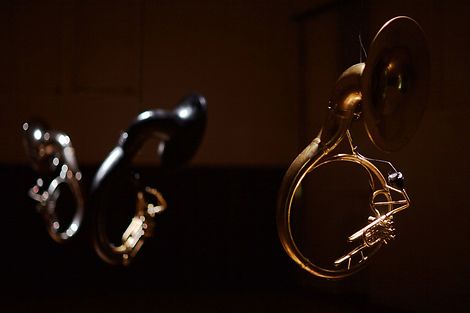 | | | Kris Verdonck, BRASS ©Hendrik De Smedt | |
| | Stijn Demeulenaere | | | Latitudes - Hybrid set | | | Les Garages Numériques | | 7 November 2019 - 18:30
| | | Beurs / La Bourse, Brussels (B) | | Stijn Demeulenaere is a sound artist and field recordist from Brussels. For his project Latitudes he records sounds all over the world, and uses them to compose soundscapes with. At the moment, the project includes recordings from Belgium, Sweden, Finland, Gabon, Romania, France, the Netherlands, South Africa, and Iceland. The recordings from all these different climates, all these different biotopes, are being explored for their sonic characteristics, and their spatial uniqueness. The database of recordings is still growing. In Latitudes Stijn develops compositions and live sets where he explores this audio material, creating new sonic structures juxtaposing the sounds, or melting them together. For his performance at Les Garages Numériques, he will bring a special hybrid set of Latitudes, where he will mix his own recordings with recordings and compositions by other field recording artists, and interlaced with the set, he’ll also perform a version of Alvin Lucier’s I’m sitting in a room. For the opening of Les Garages Numériques, the piece will become I’m standing at de Beurs / La Bourse, and will explore the idiosyncratic acoustics of de Beurs / La Bourse building at several points in the set.
In 2017 Stijn released the first album in the Latitudes series on the Brussels label Silken Tofu. He’s currently working on the second album, aiming at a release in the spring of next year.
Les Garages Numériques
Stijn Demeulenaere
| |
| 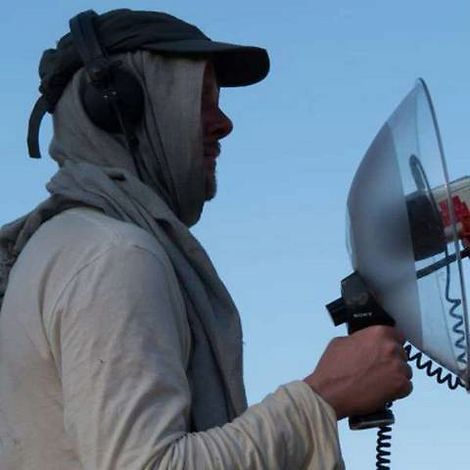 | | | Stijn Demeulenaere | |
| | Lawrence Malstaf | | | Permutations 02018 | | | Scenography for 'Digging into my magnificent trashbin, I'm searching for my life' | | 8 November 2019 - 20:00
| | | DanseFestival Barents, Hammerfest (NO) | | Lawrence Malstaf created the installation Permutations 02018 as a scenography for the performance 'Digging into my magnificent trashbin, I'm searching for my life' by Haugen Productions. Permutations 02018 - A collection of steel drums is slowly rolling through the space. When they collide they seem to hesitate and change direction. Some wonder off into the unknown, others get stuck in a corner and repeat the same pattern over and over. Although there is no central brain or master plan, the simple physical laws of cause and effect occasionally generate orderly patterns and moments of magical coincidence. Haugen Productions
Lawrence Malstaf
DanseFestival Barents | |
| 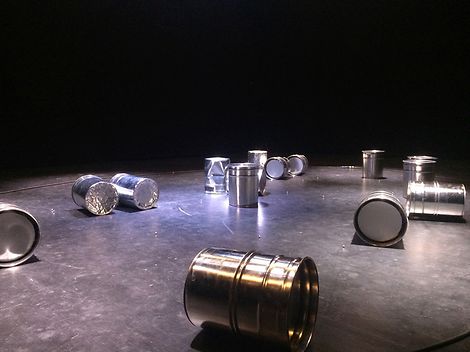 | | | Lawrence Malstaf, Permutations 02018 | |
| | Annelies Van Parys | | | SYMFONIE NR. 1, ‘CARILLON’ | | | ANTWERP SYMPHONY ORCHESTRA | | 17 November 2019 - 15:15
| | | Koningin Elisabethzaal, Antwerp (B) | | Programme
Van Parys Symfonie nr. 1, ‘Carillon’
Debussy Prélude à l'après-midi d'un faune
Debussy Rhapsodie (for clarinet en orchestra)
Brewaeys Symfonie nr. 5, ‘Laphroaig’ Annelies Van Parys follows in the footsteps of her teacher Luc Brewaeys. She transforms musical themes she finds in streets and cities and transforms these into expressive pieces of music. In 2006, for example, she wrote her First Symphony for the Antwerp Symphony Orchestra, in which she turns the sounds of the Ghent Belfry inside out.
Patrick Davin conductor
Filip Rathé conductor
Nele Delafonteyne clarinet
ChampdAction electronics Antwerp Symphony Orchestra
Annelies Van Parys
| |
| 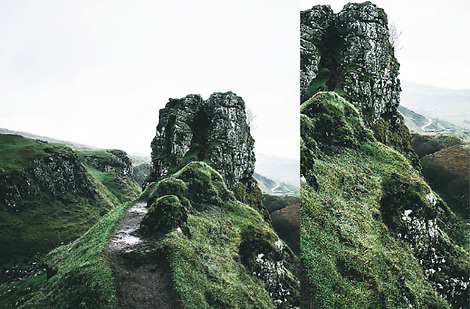 | | | Antwerp Symphony Orchestra - LAPHROAIG | |
| | Kris Verdonck | | | BRASS | | | Klinkende Stad 2019 | | 22 November 2019
until 8 December 2019
| | | Muziekcentrum Track, Kortrijk (B) | | Human emotion and the capacity for abstraction are possibly expressed most powerfully in music and the playing of an instrument. Music is also of the gods, from the heavenly sounds on Mount Olympus to the harmony of the spheres that resounds in the universe. BRASS is a ghost orchestra. The three sousaphones play themselves, and appear to be floating. The machines, automated instruments, are the source of the music in a place where man and the gods are no longer around. These sousaphones were developed by Decap, specialists in the creation of automated musical instruments. They ‘play’ passages based on a theme from the Japanese anime film Ghost in the Shell and works by Erik Satie. Their rotating movements create a slow-motion Doppler effect, whereby sounds sometimes come together and then move apart again. In BRASS, Kris Verdonck continues his research into theatre without performers. Given the increasing technologisation of society and the destruction resulting from war and climate change, the possibility of a world without people has never been so likely. The sound nevertheless has human features: breathing, blowing, ‘practising’ and warming up. The instruments are suspended in a dark room, in a perpetuum mobile – their material gleams, but the body they normally rest on is no longer there.
Klinkende Stad
Kris Verdonck
| |
| 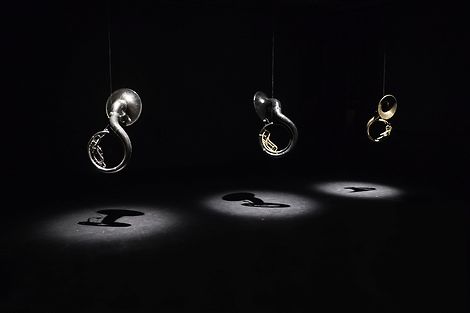 | | | Kris Verdonck, BRASS ©Jasmijn Krol | |
| | Kris Verdonck | | | DETAIL | | | JRSLM - Paradise Lost Again | | | Vrije Universiteit, Bussels (B) | | Until 17 November 2019 The sun shone, having no alternative, on the nothing new.
(Samuel Beckett, Murphy) In the installation DETAIL, a large and massive boulder hangs on the ceiling. It is hanging on a steel cable, on a ball bearing, allowing it to fully turn around its axis. The ball bearing is put in motion by a steel wheel rotated by a motor which takes its energy from solar panels. The whole chain leads to a relatively simple situation: whenever the sun shines, the boulder turns around its axis. Once the sun shines, and therefore the stone starts to revolve, the mechanism is simultaneously unrelenting: the fatalism of a world that has to and will turn. A mobile with sunlight. A surreal image with an undertone of danger and yet fascinating at the same time. The whole (complicated) technical construction has no other goal than to have the “poetry” of a heavy colossus float and turn around. DETAIL is in this sense a pointless use of knowledge and material which makes it even all the more alienating. The question can also be put forward as to whether many other developments that we call ‘technical progress’ really do help the world. The destructive potential of ever greater, faster, more efficient and automatic algorithms, processors, motors and fire power assert their influence on a daily basis in wars and in the depletion of our planet. Where is technological knowledge taking us and does it make us able to handle the problems of our age for the most part caused by ‘technological progress’? DETAIL is then also a stationary situation: frozen, hanging in the air, turning in circles in a vacuum.
JRSLM
Kris Verdonck | |
| 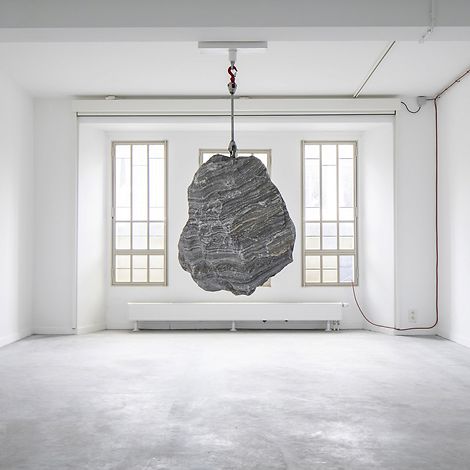 | | | Kris Verdonck, DETAIL ©Kristof Vrancken | |
| | David Bowen | | | tele-present wind | | | Saint-Ex | | | Saint-Ex, Reims (F) | | Until 18 December 2019 tele-present wind, 2019 consists of a series of 42 x/y tilting mechanical devices connected to thin dried plant stalks installed in a gallery and a dried plant stalk connected to an accelerometer installed outdoors. When the wind blows, it causes the stalk outside to sway. The accelerometer detects this movement transmitting the motion to the grouping of devices in the gallery. Therefore, the stalks in the gallery space move in real-time and in unison based on the movement of the wind outside. Saint-Ex
David Bowen | |
| 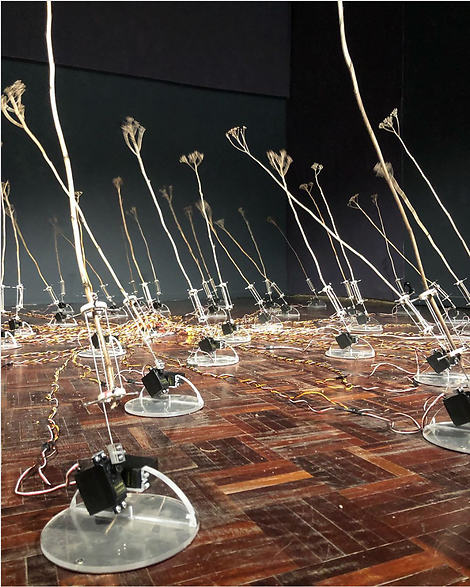 | | | David Bowen, tele-present wind 2019 | |
| | David Bowen | | | tele-present wind | | | Plein Vent! | | | Halle aux Sucres, Dunkerque (F) | | Until 30 November 2019 tele-present wind, 2018 - This installation consists of a series of 126 x/y tilting mechanical devices connected to thin dried plant stalks installed in a gallery and a dried plant stalk connected to an accelerometer installed outdoors. When the wind blows it causes the stalk outside to sway. The accelerometer detects this movement transmitting the motion to the grouping of devices in the gallery. Therefore the stalks in the gallery space move in real-time and in unison based on the movement of the wind outside. Halle aux Sucres
Projet COAL
David Bowen | |
| 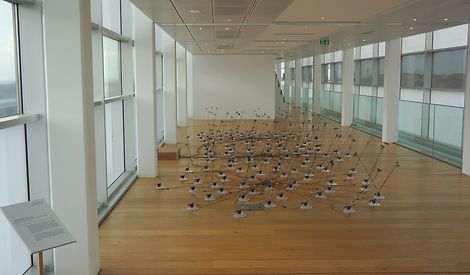 | | | David Bowen, tele-present wind, 2018 in Plein vent!, Halle aux Sucres © COAL | |
| | Kiki Smith | | | Entre Chien et Loup (in the twilight) | | | Centre de la Gravure et de l'image imprimée | | 28 October 2019
until 23 February 2020
| | | Centre de la Gravure et de l'Image imprimée, La Louvière (B) | | The title of Kiki Smith’s exhibition refers to that particular hour when day becomes night, that moment when the dog must protect the sheep and when the wolf makes use of the darkness to come out of the wood!
All of Kiki Smith's art works oscillate between light and darkness, evolve from the quiet nature towards the untamability of certain animals, enter the world of the night, that particular moment when pleasure and fear come together. Sometimes, the artist speaks without any taboos of the bestiality hiding in humanity. She reveals our unfathomable fears, what is haunting the depths of our intimacy and what we would like to keep hidden. Sometimes, she juxtaposes fragments of images of her body in disturbing positions or of female organs, in an attempt to undermine the traditional representations of the stereotypical image of a woman. However, by screaming at the moon, the wolf - just like Kiki Smith - also refers to its strength; that of the spiritual energy and of the unconsciousness to which universal knowledge is accessible. They both get connected with the world, its myths and symbols, as well as with the laws of nature. After all, the blue hour, another metaphor of this uncertain interval between day and night, is also considered the best hour to smell the scent of flowers and to hear the birds sing. In many of her most recent works, Kiki Smith tries to capture and translate this ephemeral symphony; it’s an allegory of a world in which concord and serenity would reign for a brief moment. Entre Chien et Loup | |
| 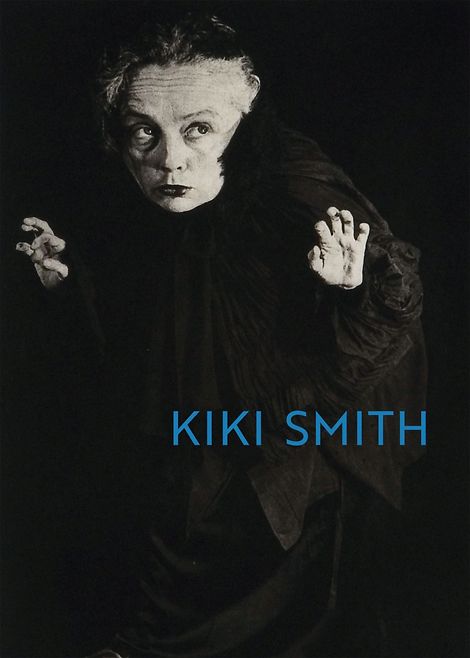 | | | Kiki Smith, Out of the woods, 2002 | |
|